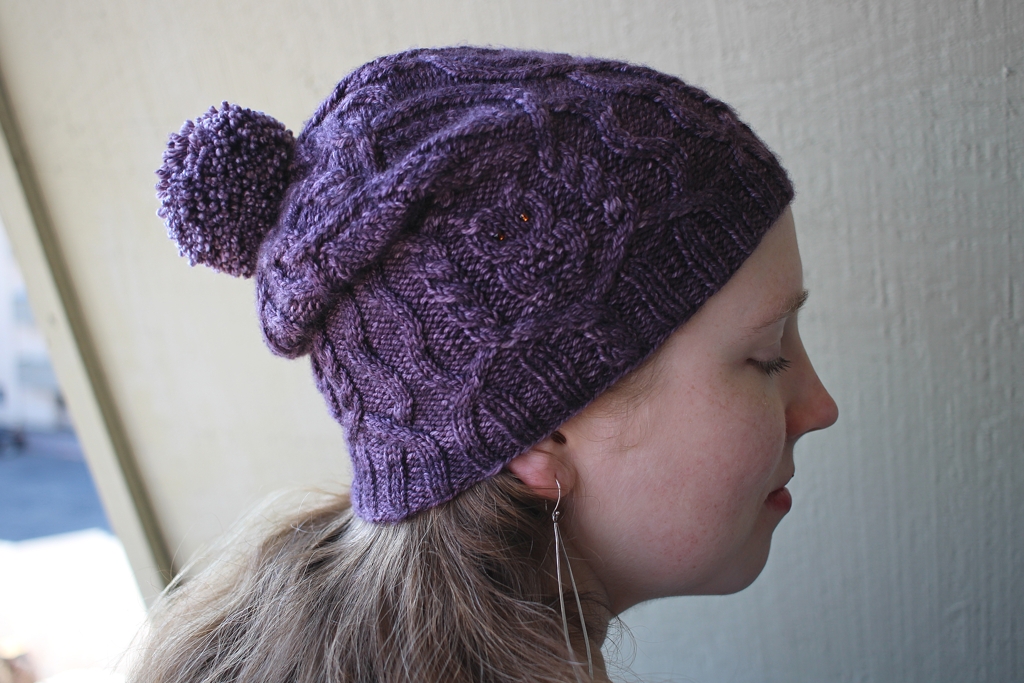Finished: The Owl In The Thicket Hat
/It seems like I say this every year when I finish a new hat, but this is my new favorite hat. It’s soft, warm, and perfectly slouchy. There’s even cables and owls with beaded eyes for good measure. The only thing I’m kicking myself about is that I didn’t cast on until a year after I’d bought the yarn! Still I’m glad it’s finished and just in time for weird spring weather. Will it rain? Will it snow? Look out the window to find out.
The pattern, Owl in the Thicket by Sara Huntington Burch, was a great challenge. This hat is all about the details and required lots of attention. Aside from the ribbing, there were only a handful of rows that were the same in the entire pattern. I had a lot of fun knitting it, and now I want work on more complicated projects. It’s nice to break out of the auto-pilot knitting every once in a while. And the knitting didn’t actually take all that long because I had a hard time putting it down. I just got hung up on how to block the thing which I’ll show in more detail in my next post.
I splurged on a skein of the recommended yarn, Anzula Cricket in the Lenore colorway, which I don’t do often. The benefit and responsibility of having a large stash means I usually shop from it first. The reason I splurged is that Cricket is a blend of merino and cashmere with a beautiful luster. The yarn was wonderful to work with and the semi-solid dye job added the right amount of detail. I’m glad I didn’t pick out a darker color because then all the cables would have gotten lost which would have been a complete waste.
The yarn and cables certainly go a long way towards making this my favorite hat, but the pom-pom is what really makes it. I add pom-poms to stuff on a case-by-case basis. They’re cool, but not always necessary. Not this time. The pattern sample looked so good with a pom-pom, and my hat just looked so lacking without one. So I made a very large and in charge pom-pom, but how to put it on? This pom was pretty weighty and used 5 yds of yarn! I didn’t want it to pull the hat out of shape or for it to look tacked on. The answer turned out to be a .5” button. I used this tutorial for how to attach a removable pom-pom. Now, I have no intention of wearing the hat without the pom or taking it off (except maybe to wash it). The button gives the pom somewhere to sit, and that little bit of extra structure makes all the difference.
Now to wait for the weather to get cold enough to wear this beauty. I might not have to wait long with this random weather.
The Specs:
Pattern: The Owl In The Thicket by Sarah Huntington Burch
Yarn: 190 yds Anzula Cricket - Lenore
Needles: US 4 - 3.5 mm
Dates: January 11 - March 11, 2018
@Ravelry
















